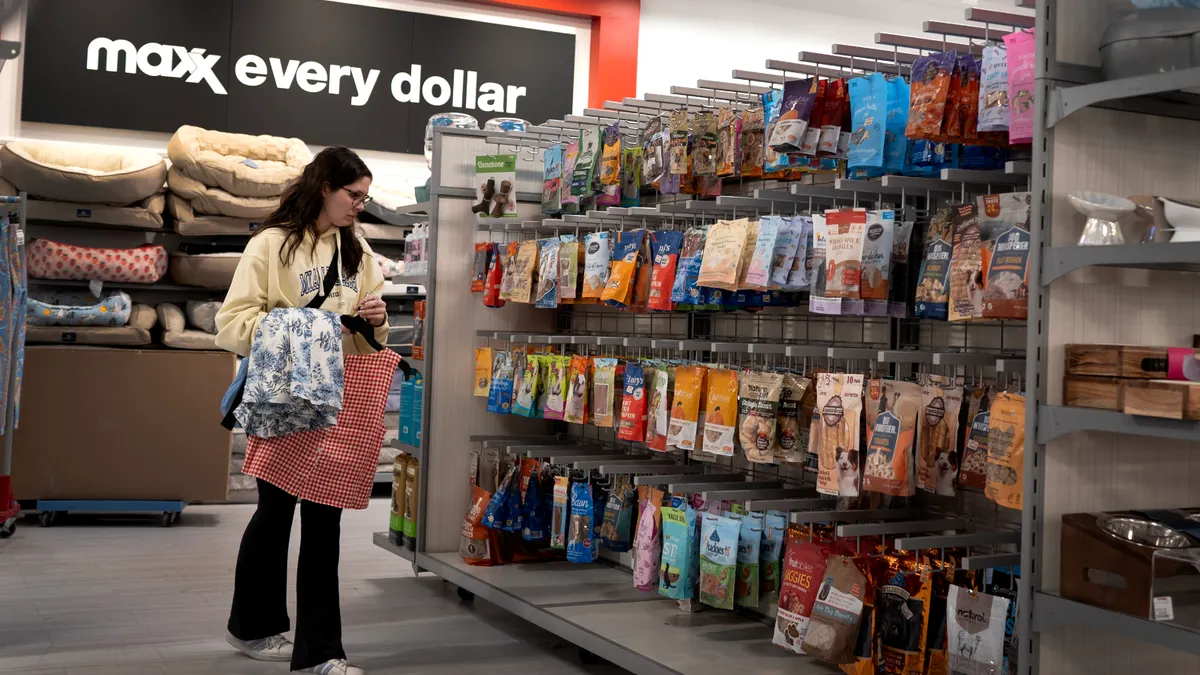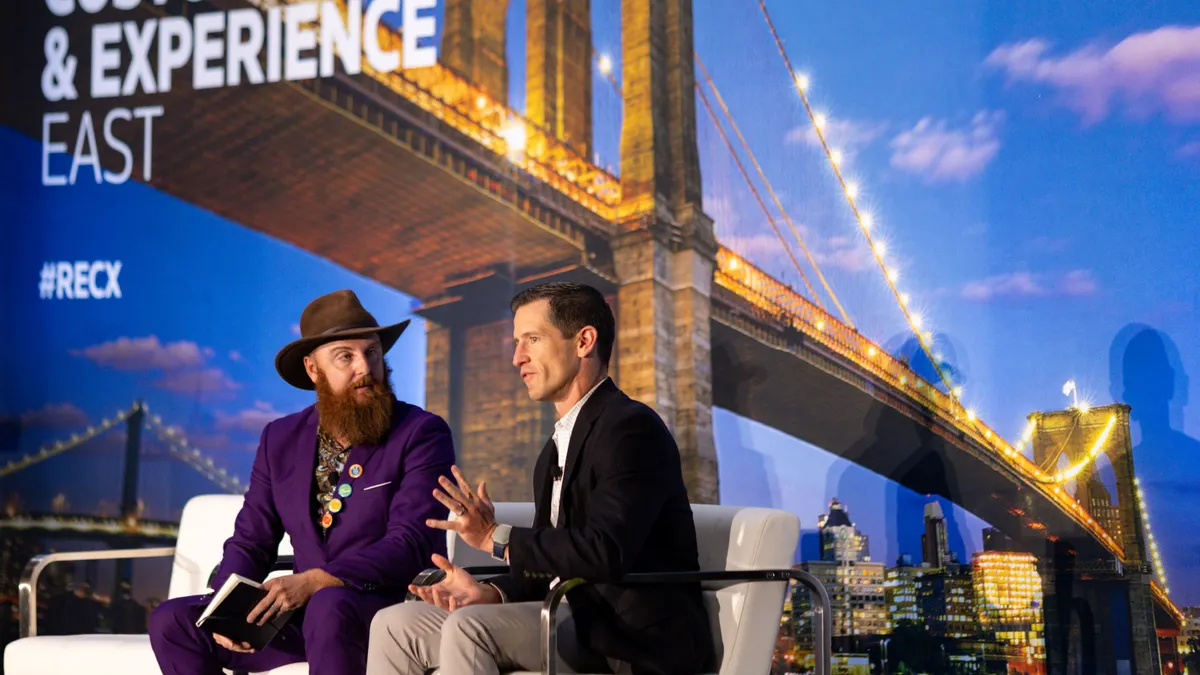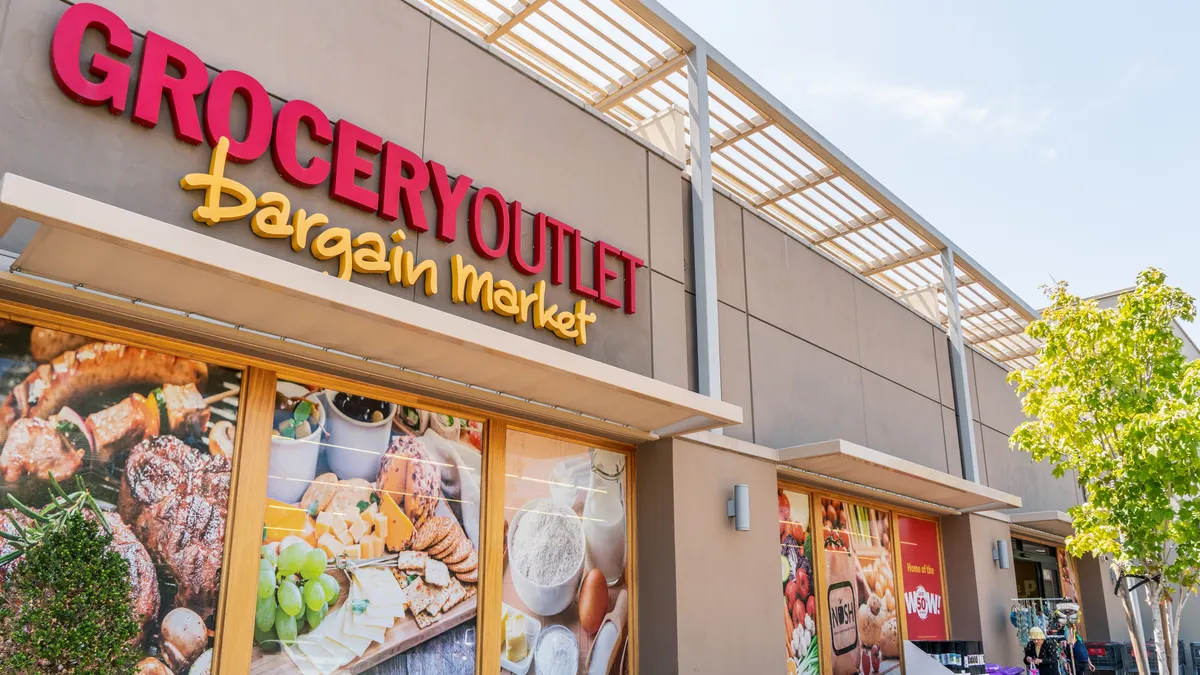In the competitive womenswear market, one brand has found that focusing on customer connection is central to its strength. At J.Jill, emphasizing customer experience is the path to loyalty.
“In an age of diminishing brand loyalty — caused by social media, fast fashion and choice overload — there’s a lot of noise,” Kara Howard, SVP of marketing and CX at J.Jill, told CX Dive.
Howard believes successful brands are able to cut through the clutter by fostering a strong emotional connection with their customers, maintaining product quality and creating numerous touch points for their customer to provide feedback.
J.Jill has put an emphasis on continuously evolving its understanding of the customer and what she needs, through quarterly customer surveys and ongoing touch points.
“She knows she can rely on us and that we’re listening to her,” Howard explains.
The brand knows a thing or two about loyalty, enjoying a strong following among its 40-year-old plus female customer group, as a result. “Our average customer tenure is 10 years, and our retention rates are very high,” Howard told CX Dive.
“We’re always thinking about both ‘functional’ touch points, like SMS on top of email or catalog on top of digital to inform her about what we have to offer her, and more ‘emotional’ touch points, like connecting with diverse influencers or reaching out to her through her trusted store stylist when something she loves arrives,” said Howard.
Great CX experiences, which businesses can track using metrics such as effectiveness, ease of interactions and emotions generated, help bolster loyalty, according to Mary Pilecki, VP and principal analyst at Forrester.
“Loyalty is an outcome, with the primary results being customer retention, customer enrichment (buying more products/services) and advocacy (referrals to friends, reviews),” Pileck said in an email statement.
Defining the loyalty metrics for your business
To define loyalty, which differs by business and industry, it is important to clearly set loyalty objectives. Then, organizations have to consistently measure performance against them, optimizing their strategies to achieve the results they set out for, according to Tim Mason, CEO at the SaaS company Eagle Eye.
“There is no single definition for customer loyalty — different businesses will be pursuing different objectives, and thus their definition of what it means to be a ‘loyal customer’ to that business will be different,” Mason told CX Dive.
Mason was the brains behind redesigning loyalty programs for major U.K. supermarket chains Tescos and Morrisons, and is explicit about the most important element of loyalty: “Follow the Golden Rule — use your proposition to treat your customers the way they want to be treated,” he said.
The goal may be increasing share of wallet, boosting active loyalty members or scheme participation, or looking to improve NPS.
“Whatever it is though, the business must define clearly what it is they’re trying to achieve through their loyalty proposition and then build a program around that to deliver a successful outcome,” he said.
Loyalty alone doesn’t necessarily fuel CX — rather Forrester believes that great customer experiences, measured by the effectiveness and the ease of the interaction as well as the emotions generated by it, lead to the loyalty outcomes, such as retention, enrichment, and advocacy.
Forrester research shows that consumers want frictionless experiences — and not just for purchase. In loyalty programs, for instance, members should be able to check their status, number of points and benefits seamlessly.
What role does a loyalty program play?
Today, more and more brands are looking to adopt a loyalty program to help bolster loyalty through metrics such as customer lifetime value, retention and referral rate. For customers, there has to be a clear benefit in adding another scheme to their already crowded list of programs.
Forrester says loyalty programs are becoming ubiquitous, with 89% of U.S. online adults belonging to at least one loyalty program.
However, 30% of U.S. online adults say they frequently forget to use the loyalty programs they belong to, and 28% state they belong to too many loyalty programs.
Brands are looking to differentiate their programs and improve overall results, Forrester said, and it’s seeing a transition from purely transactional loyalty programs (discounts, earning and redeeming points, etc.) to including a greater focus on experiences and experiential rewards that help build lasting emotional connections with customers.
“Experiential rewards can range from better customer service, early access to new products, and the ability to use points to donate to charities all the way to unique experiences such as an exclusive cooking class and dinner hosted by chef Martín Berasategui and a stay at the Ritz-Carlton Tenerife, Abama,” Pilecki tells CX Dive.
To encourage uptake, brands need to determine the value exchange they’re asking customers to participate in, but they need to know value means different things to different people.
“Value is the No. 1 attribute customers are looking for from loyalty schemes,” Mason said.
“Retailers today also can’t simply rely on the old adage of ‘points tomorrow’ either," he said. “Customers now want value today and tomorrow as part of their loyalty schemes."
It doesn't matter if its low prices, promotions, convenience, service, assortment, exclusivity or entertainment. “The point is that loyalty needs to extend across all areas of the business and all customer types, using it as a vehicle to deliver personalized customer experiences that keep those customers coming back, rather than simply being a transactional, one-way relationship,” Mason said.
His advice for brands is to build a proposition that is right for your customers and your businesses, not just a “me too” loyalty program. “Determine what behaviors you want customers to proactively take and build your rewards scheme around that,” he said.
Mason also says encouraging participation in loyalty schemes has the added benefit of increasing engagement that helps deliver a better, richer data source for retailers.
The task for brands is to understand individual customers and their drivers to offer personalized experiences that resonate. Brands should be “using customer data to be as helpful and relevant as possible and rewarding the behavior they seek,” he said.
J. Jill has seen value in taking a data-driven feedback approach, using the input from thousands of existing and prospective customers to launch Welcome Everybody, a size inclusivity initiative.
“Notably, we leaned into one of the most important aspects of the experience we heard about in the research, which was being clear about the sizes we offer so she knew she could find what she needed from J.Jill," Howard said. "As a result, we were not only able to better address her needs through our offerings, but also fill a void in the retail market."





















